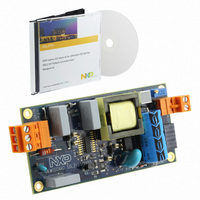SSL2101T/DB/FBCB120V,598 NXP Semiconductors, SSL2101T/DB/FBCB120V,598 Datasheet - Page 11

SSL2101T/DB/FBCB120V,598
Manufacturer Part Number
SSL2101T/DB/FBCB120V,598
Description
BOARD EVAL LED DRIVER SS2101
Manufacturer
NXP Semiconductors
Type
DC/DC Switching Converters, Regulators & Controllersr
Specifications of SSL2101T/DB/FBCB120V,598
Current - Output / Channel
400 mA ~ 800 mA
Outputs And Type
1, Isolated
Voltage - Output
9 ~ 23 V
Features
Dimmable, TRIAC Dimmable
Voltage - Input
120VAC
Utilized Ic / Part
SSL2101
Input Voltage
120 V
Board Size
103 mm x 50 mm x 20 mm
Maximum Operating Temperature
+ 100 C
Minimum Operating Temperature
- 40 C
Operating Supply Voltage
8.5 V to 40 V
Product
Power Management Modules
Dimensions
103 mm x 50 mm x 20 mm
For Use With/related Products
SSL2101T
Lead Free Status / RoHS Status
Lead free / RoHS Compliant
Lead Free Status / RoHS Status
Lead free / RoHS Compliant, Lead free / RoHS Compliant
Other names
568-4812
NXP Semiconductors
8. Board optimization
UM10341
User manual
8.1 Changing the output voltage and LED current
8.2 Changing the output ripple current
8.3 Adapting to high power reverse phase (transistor) dimmers.
The following modifications must be made in order to meet different customer application
requirements:
Remark: All components referred to in the text can be located on
schematic
When compared with other topologies, a flyback converter has the major advantage that it
is suitable for driving a broader range of output voltages. Essentially, changing the turns
ratio whilst maintaining the value of the primary inductance, will shift the output working
voltage accordingly. Part of the efficiency of the driver is linked to the output voltage. A
lower output voltage will increase the transformation ratio, and cause higher secondary
losses. In practice, a mains dimmable flyback converter will have an efficiency of between
80 % for high output voltages (such as 60 V) down to 50 % for low output voltages (such
as 3 V). Synchronous rectification might become advisable to reduce losses at low
voltages. The NXP TEA1791 can be used for this purpose. For exact calculations of
transformer properties and peak current, refer to application note AN10754, “SSL2101
and SSL2102 dimmable mains LED driver”, and the calculation tool that is provided with it.
The output current ripple is principally determined by the LED voltage, the LED dynamic
resistance and the output capacitor. The value of C6 has been chosen to optimize
capacitor size with light output. A ripple of ± 25 % will result in an anticipated deterioration
of light output of <1 %.
The size for the buffer capacitor can be estimated using the following equation:
Example:
For a ripple current of ± 5%, and a mains frequency of 50 Hz, and a dynamic resistance of
0.6 Ω, C6 has to be 20 ÷ (300 × 0.6) = 111 mF. For a ripple current of 25 % and a dynamic
resistance of 6 Ω, C6 has to be 4 ÷ (300 × 6) = 2200 μF. Using a series of LEDs, the
dynamic resistance of each LED can be added to the total dynamic resistance.
Reverse phase (transistor) dimmers differ in two ways that can be beneficial but can also
cause problems with dimming detection:
C
•
out
The negative phase-cut (trailing edge) causes no inrush current when the dimmer
triggers. When using triac dimmers, there will be a sudden voltage difference over the
input leading to a steep charge of the input capacitors. The resultant peak current will
lead to higher damper dissipation. Because this steep charge is missing, the input
capacitors will have less stress, and the input circuit is less prone to audible noise.
=
I
---------- -
LED
I Δ
diagram”.
×
--------------------------------------------
6
All information provided in this document is subject to legal disclaimers.
×
f
net
×
1
Rev. 2 — 3 February 2011
R
dynamic
SSL2101 12 W mains dimmable LED driver
Figure 8 “Board
UM10341
© NXP B.V. 2011. All rights reserved.
11 of 24
(1)















